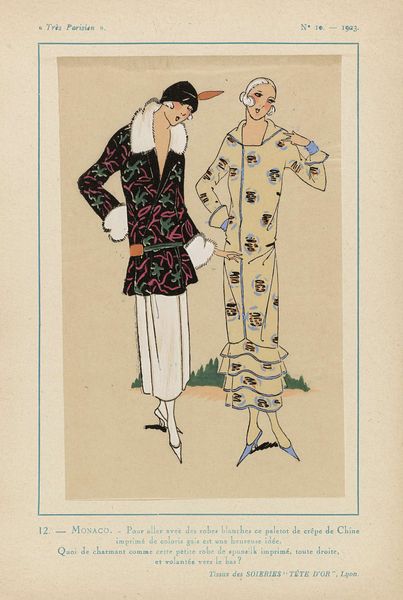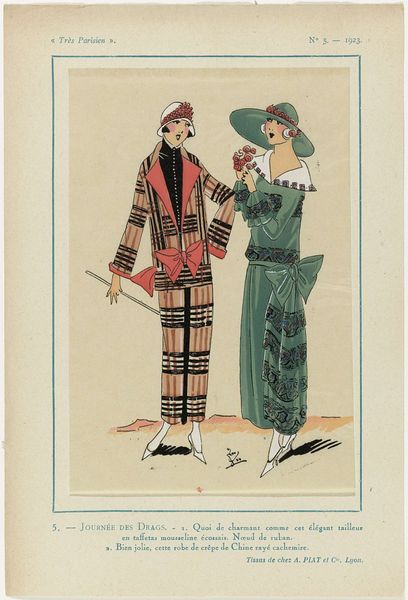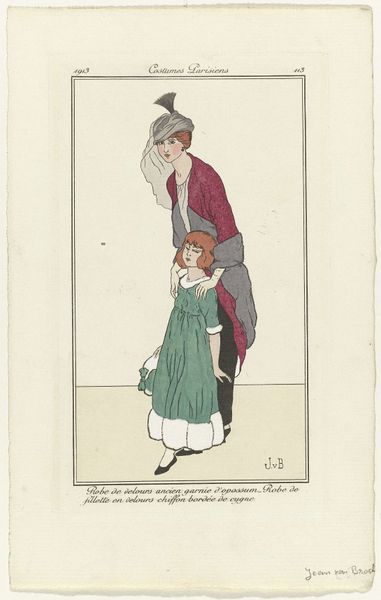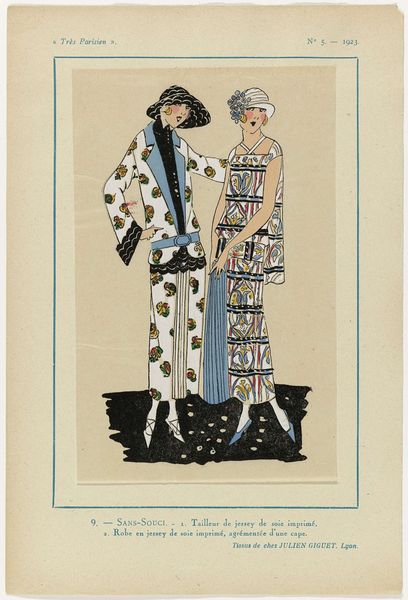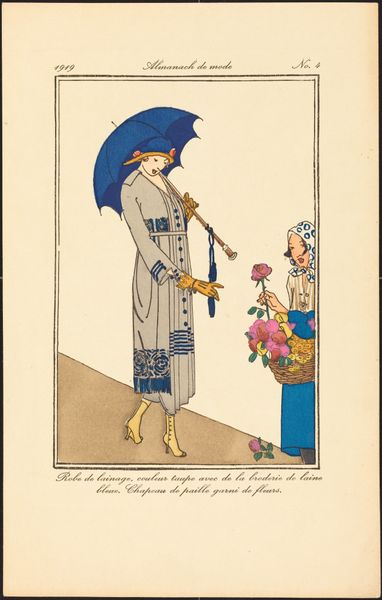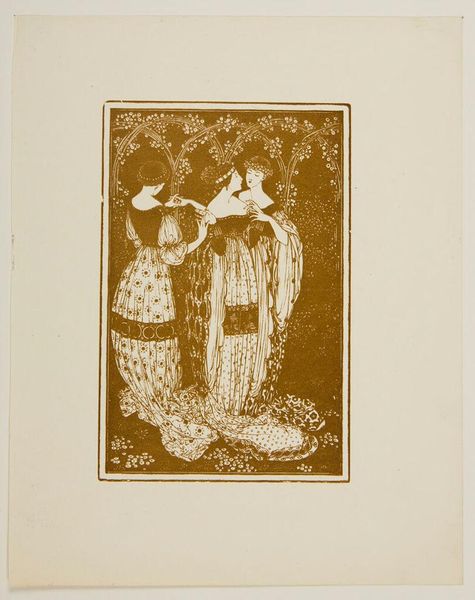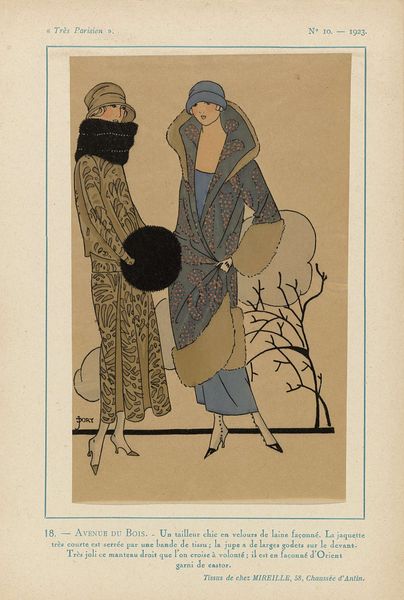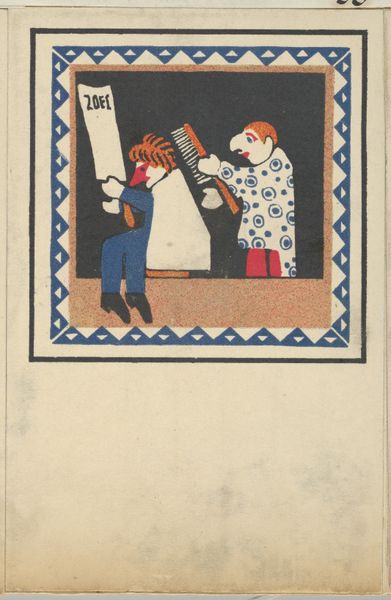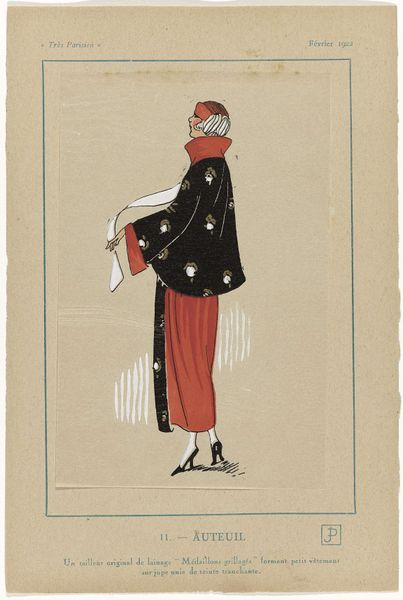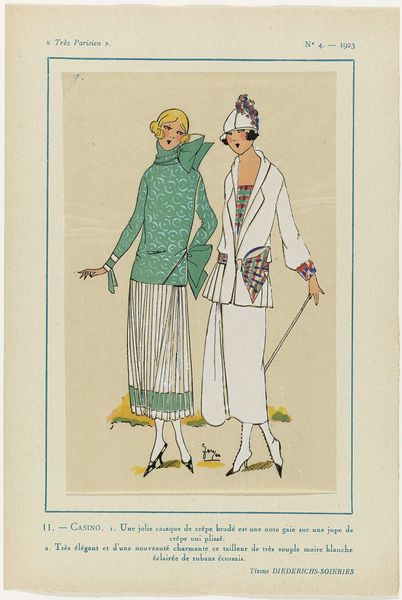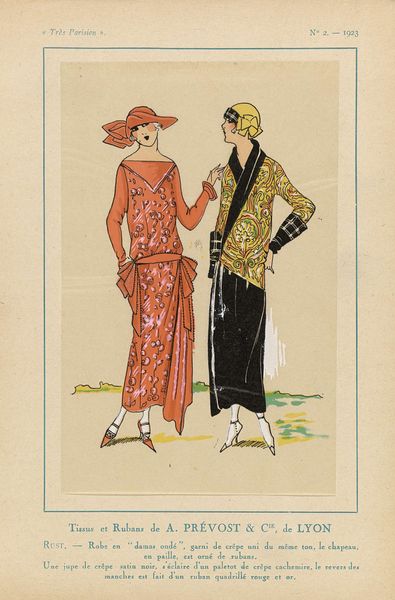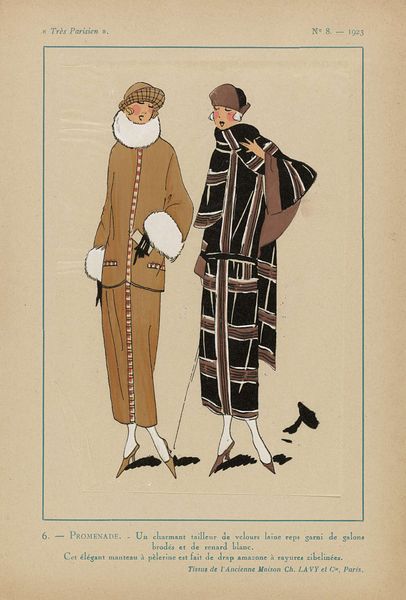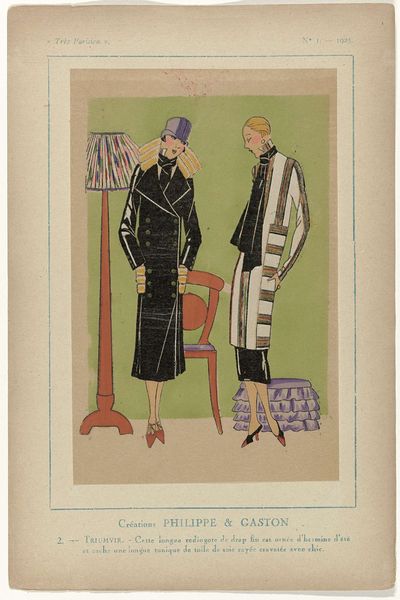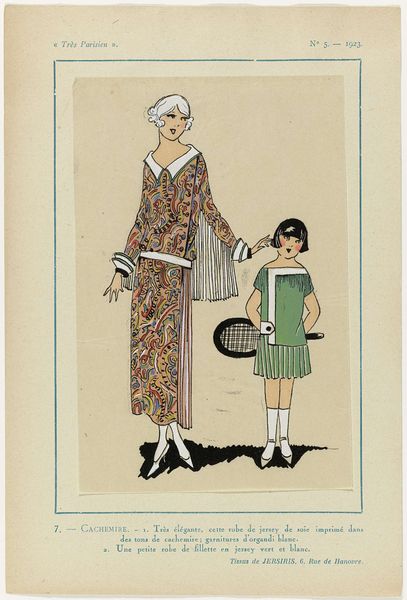
Journal des Dames et des Modes, Costumes Parisiens, 1913, No. 44 : Manteau de ratin (...) 1913
0:00
0:00
print, watercolor
#
portrait
#
art-nouveau
# print
#
dog
#
figuration
#
watercolor
#
watercolour illustration
#
genre-painting
#
miniature
#
watercolor
Dimensions: height 178 mm, width 108 mm
Copyright: Rijks Museum: Open Domain
Editor: This is a print titled "Journal des Dames et des Modes, Costumes Parisiens, 1913, No. 44" by Monogrammist MFN. It's from 1913 and seems to be watercolor and print. It features two children dressed in very stylish outfits of the time period. The mood feels quite precious, almost like a vignette. What stands out to you? Curator: What immediately catches my eye is the performative aspect. These aren't just depictions of children; they're carefully constructed images of an aspirational lifestyle. The dog becomes a symbol of status and belonging, almost a living accessory. The surrounding leaves also denote the Autumn season as one when these lavish materials are most fashionable to don. Does this strike you as staging versus, say, documentation? Editor: Yes, the dog does feel more like a prop than a pet here. I hadn't thought of the seasonal connections with the leaves either! How does that inform your interpretation of its themes? Curator: The turning leaves coupled with the crisp autumnal colors could evoke the fleeting nature of fashion, of childhood itself, and perhaps even a veiled reference to the changing social landscape before World War I. These symbols – childhood, dogs, autumn leaves - possess an innocence but simultaneously hint at greater shifts lurking beneath the surface. Is there a similar layering that speaks to you in terms of materials and application? Editor: I hadn’t considered it so deeply, but the symbols add another layer of depth to the illustration, and yes the materials denote a time of economic shift and accessibility too. The simple watercolor lines speak of accessibility in an era just preceding huge artistic change! Thanks for sharing these perspectives. Curator: And thank you. Noticing that push and pull—between the surface-level elegance and the undercurrents of societal transformation—really allows the artwork to speak across the ages.
Comments
No comments
Be the first to comment and join the conversation on the ultimate creative platform.
